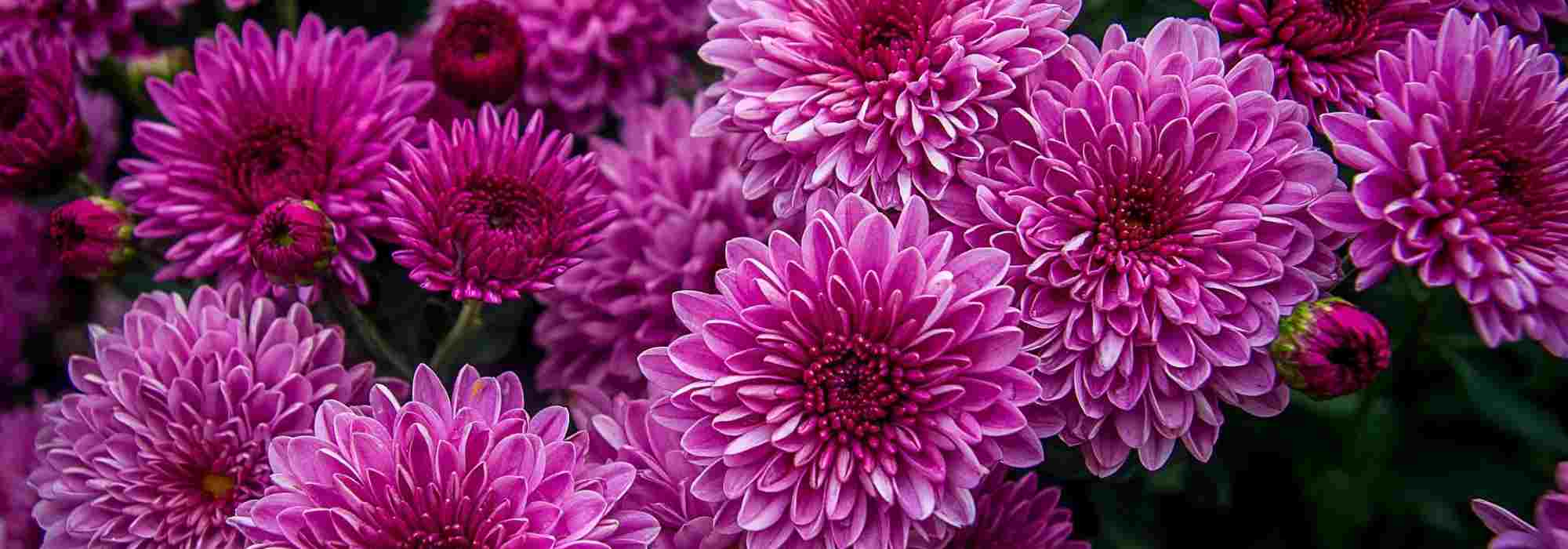
Growing Chrysanthemums in a pot
Our tips to get it right
Contents
Perennial chrysanthemums or autumn daisies delight us with their exceptional summer or autumn flowering, in daisy shapes or perfectly round pompons (the famous pomponettes!). Available in a wide range of shapes and colours, they are grown in the garden and as potted displays for All Saints’ Day. Growing a chrysanthemum in a pot is a long-term solution to keep a flowering display on the terrace or balcony until winter sets in.
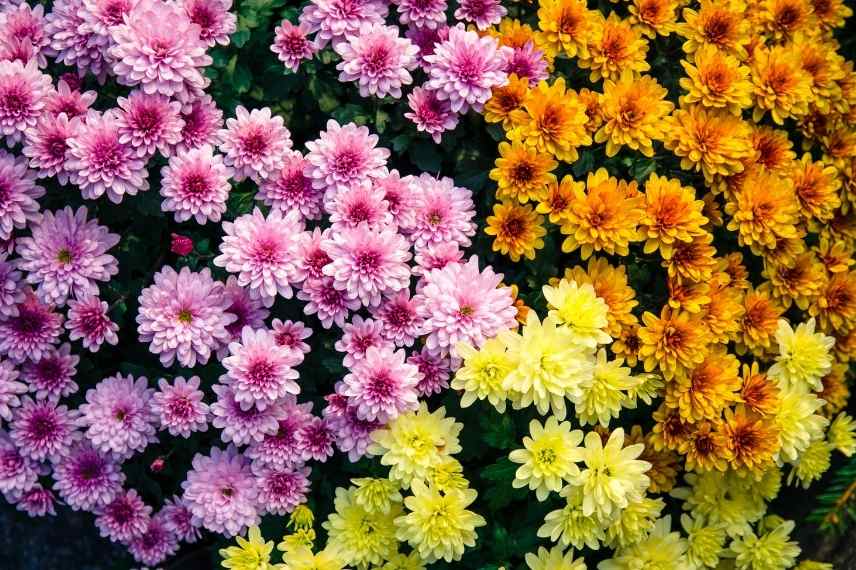
Discover all our tips to choose the right variety, how and when to plant, water and care for it!
→ Also discover our complete factsheet on the Chrysanthemum
Varieties best suited to container growing
Beside florist chrysanthemums (Chrysanthemum hortorum), the classic pomponettes for All Saints’ Day that flower in cemeteries until first frosts and are often grown as annuals, there are truly perennial species such as autumn daisies or Rubellum that rank among the hardiest chrysanthemums (at least down to -15°C). The first chrysanthemums flower as early as June, while the latest are still in full flowering in November, even into December–January. The annual chrysanthemums are more suited to a wildflower garden.
Choose dwarf chrysanthemums for your window boxes and large pots: they will form magnificent balls of colour! Less hardy varieties or the latest cultivars also make good subjects to grow as annuals in pots, or to store over winter and bring out again in spring. Either way, they are easy to grow in pots and perfect on your terrace or balcony!
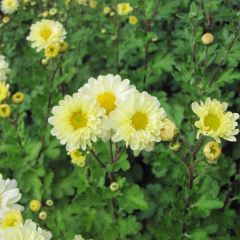
Chrysanthemum Poesie
- Flowering time October to December
- Height at maturity 1 m
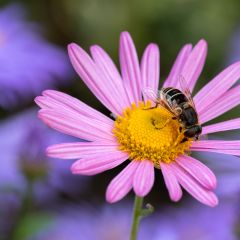
Chrysanthemum rubellum Clara Curtis
- Flowering time September to November
- Height at maturity 60 cm
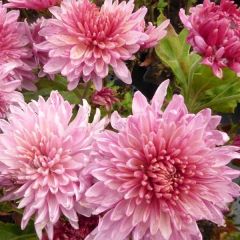
Chrysanthemum Orchid Helen
- Flowering time October, November
- Height at maturity 50 cm
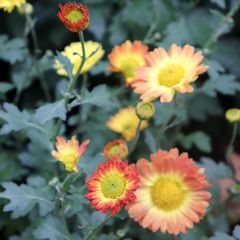
Chrysanthemum rubellum Last Sun
- Flowering time September to November
- Height at maturity 60 cm
When and how to plant a chrysanthemum in a pot?
When to plant?
Planting a Chrysanthemum in a pot is done in spring from March to May or in autumn from September to November, in any case outside periods of frost or extreme heat.
Which type of pot and which substrate to use?
Choose a large pot or a planter at least 20 cm deep. The container must have drainage holes in the bottom so that water can drain away easily without risking rotting the root system. To flower well, Chrysanthemum prefers a rich, well-drained substrate. Plant it in a mix of good potting compost for flowering plants, loam and coarse sand or gravel. Adding a little sand improves drainage and prevents water from stagnating in the pot as it is very sensitive to excess water.
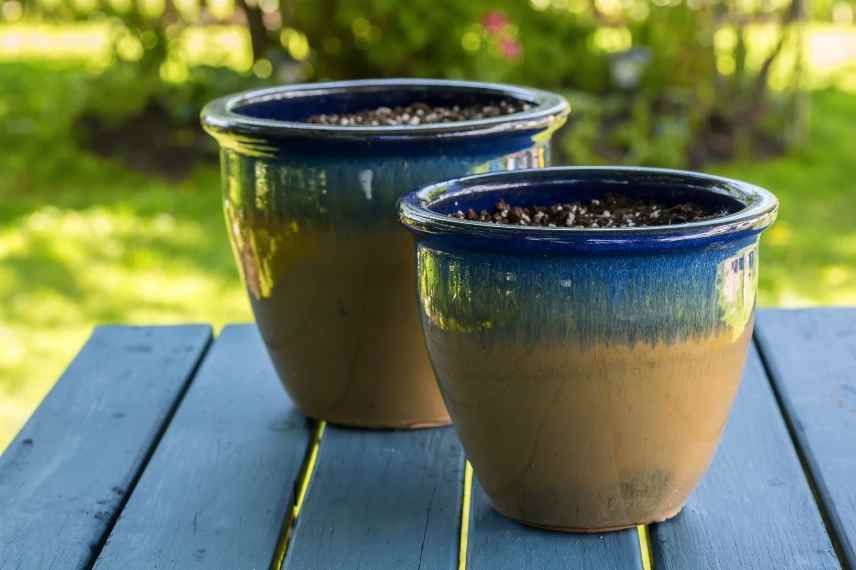
How to plant the Chrysanthemum in a pot?
- Create a good drainage layer at the bottom of the pot, for example with clay pebbles
- Place the rootball well in the centre and backfill with substrate
- Firm down lightly to avoid air pockets
- Water generously
Where to place it?
Chrysanthemum requires a sunny position. Place the pot in the sun, it guarantees more generous and more colourful flowering.
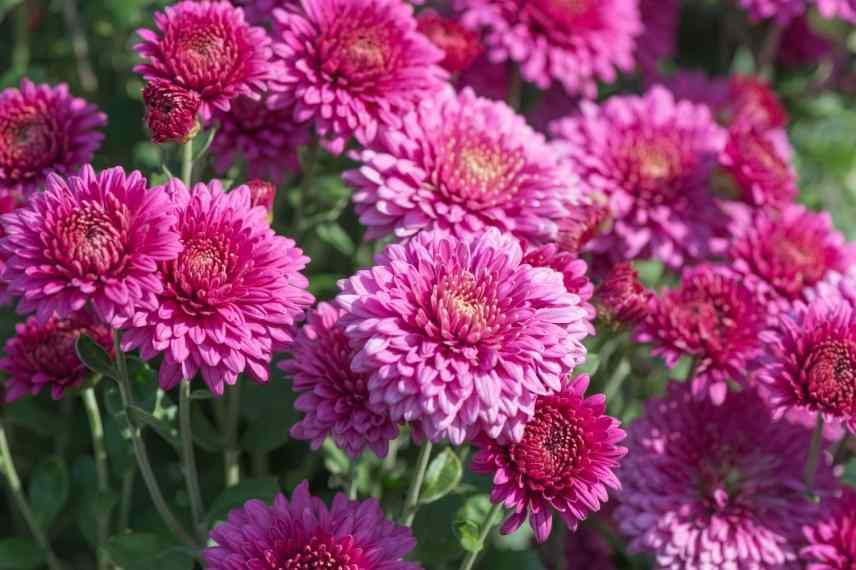
Discover other Chrysanthemum
View all →Available in 1 sizes
Available in 1 sizes
Available in 1 sizes
Available in 2 sizes
Available in 2 sizes
Available in 1 sizes
Available in 2 sizes
Available in 1 sizes
Available in 2 sizes
Available in 1 sizes
How to care for a potted chrysanthemum?
Watering potted chrysanthemum
In a pot, substrate dries out more quickly than in ground. Water twice a week but without excess, letting soil dry out between waterings. It prefers substrate to remain relatively cool. Water inputs should be regular but always moderate. When watering, avoid wetting foliage to prevent powdery mildew. Also ensure water does not stagnate in the saucer. In winter, reduce waterings, however continue to water from time to time so substrate is not completely dry.
Fertilisation
To encourage flowering, during growth it will appreciate a liquid fertiliser rich in potash every eight days until buds colour.
Pruning
- To maintain compact habit, you can cut back stems in spring to 30 cm, this will encourage chrysanthemum to become ramified
- During summer, to obtain larger flowers, remove flower buds on lateral shoots
- Remove faded flowers to encourage new ones and lengthen duration of flowering
Overwintering
In regions with mild winters, you can leave pots outside, especially if plants are hardy chrysanthemums. Place a thick dry mulch of dead leaves or straw at their base to protect the stump from cold.
In regions with harsh winters, we recommend bringing most tender chrysanthemums inside, sheltered from frost and rain, into a conservatory or cold greenhouse. If left outside, wrap plants in horticultural fleece. You can put pots out again in May, once temperatures start to warm.
Repotting
Repot in autumn, every two years, each time into a pot only slightly larger. If not repotting, you can content yourself with a top-dressing.
- Subscribe!
- Contents
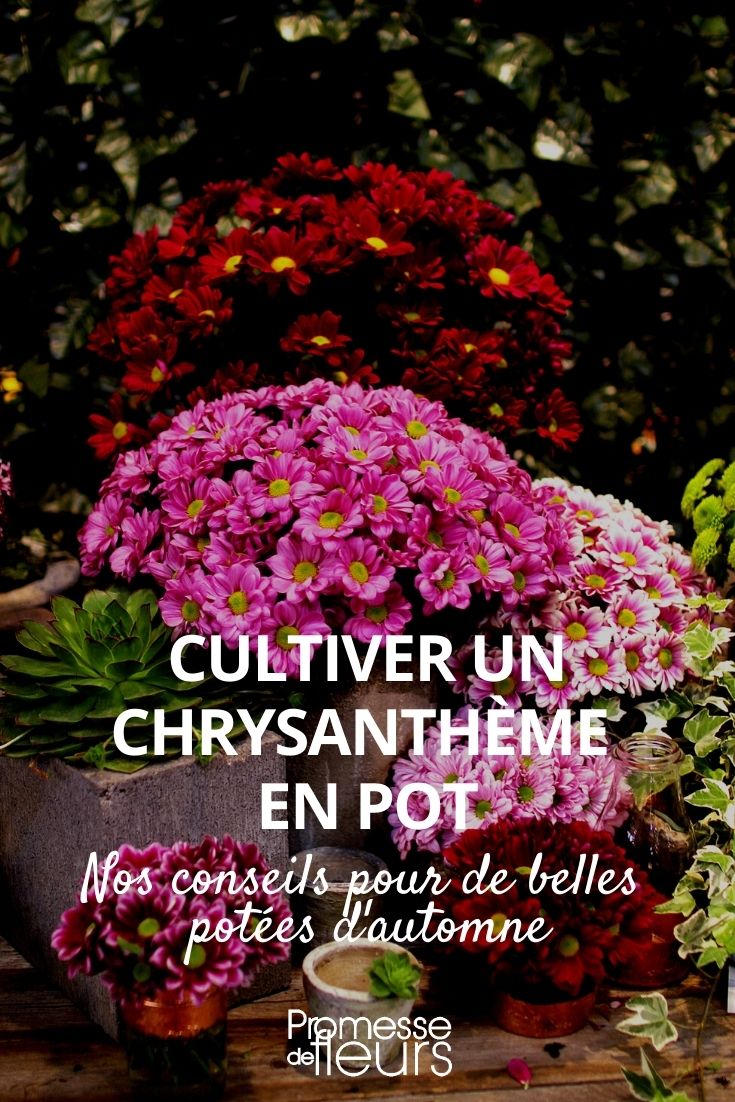































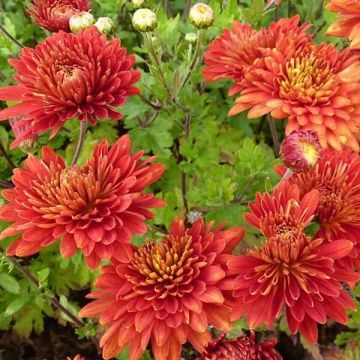
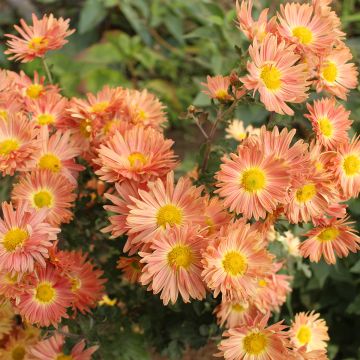
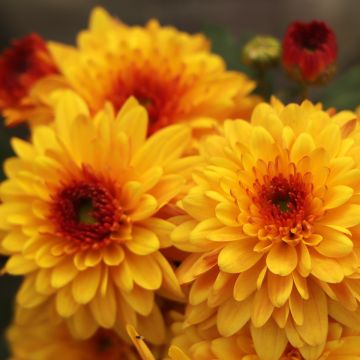

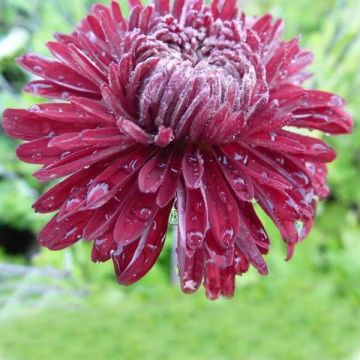
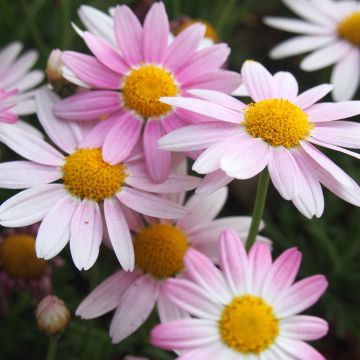

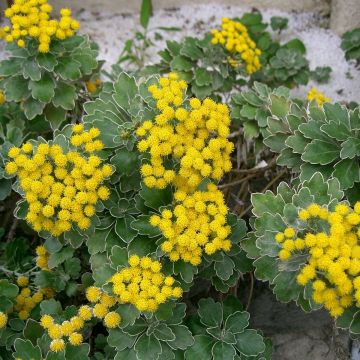
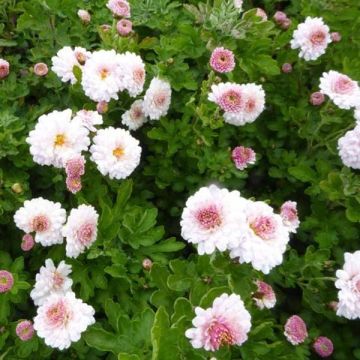

Comments